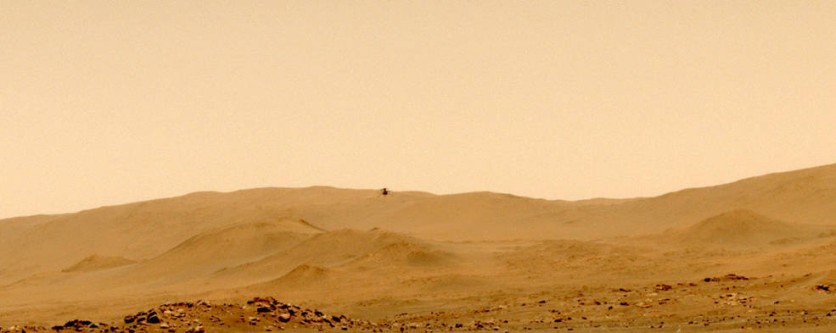The Ingenuity Mars helicopter was one of the biggest pieces of news for NASA last year, and for a good reason. With its multiple successful flights above the surface of the Red Planet-with likely many more on the way-Ingenuity is actually heralding a new age of space exploration tech.

It used to be that humans could only explore the surface of another world using a rover. We all saw this with the Lunar Rover, as well as all of the rovers ever sent to Mars. However, these wheeled machines can only cover so much ground within a specific span of time.
That's where the Ingenuity Mars helicopter comes in. According to the BBC, a drone-like exploration machine like that can explore a wider territory in far less time than a rover could. However, flying such a machine on another planet presents so many design challenges, which is why Ingenuity's flights last year were the stuff of legend.
Martian Skies Are Extremely Different From Earth's
NASA's engineers, with the help of Ingenuity, are getting first-hand experience on Mars with regards to designing flying machines to explore other planets. That's because each planet will always have a different atmosphere than the last, which is why designing a drone-like Ingenuity is an insane feat of engineering in its own right.

Perhaps the biggest factor here is how thin the Red Planet's atmosphere is compared to Earth's. As per Space.com, the atmosphere on Mars is 100 times thinner, and is 95 percent carbon dioxide. Try to fly something like a Chinook helicopter there, and it will barely leave the ground.
With such a thin atmosphere, a helicopter or drone's blades will have to spin way faster than they do on Earth to generate lift. According to TheNextWeb, flying a helicopter or drone on Mars would be equal to flying a helicopter on Earth at 100,000 feet-an impossible feat, considering that the highest a helicopter has ever flown here is only 42,000 feet above the ground.
Read Also : NASA Ingenuity Flight Delays Due to Dust Storm in Mars, to Resume Operations on Sunday; Is it in Danger?
How The Ingenuity Mars Helicopter's Successes Will Change Space Exploration
NASA's main goal with the Ingenuity Mars helicopter was relatively simple: to prove that they can fly above the surface of an alien planet. Once they've worked out the design kinks on it, then they will shift their focus to building even more aircraft like it meant to explore other worlds beyond Mars.
One of the biggest new projects will be Dragonfly, a helicopter the size of a small car scheduled to land on Saturn's largest moon, Titan. NASA says that this rotorcraft will look for either origins or signs of life on the moon, which has gained fame in astronomy circles for its potential to harbor liquid water oceans. And as you should know, life on Earth depends on liquid water to exist.

Another mission will involve NASA sending two aircraft to Venus. This is perhaps the most challenging of all, considering that Earth's twin is an absolute hellscape of a planet. Its atmosphere alone reaches around 872 degrees with a pressure of 93 bar (1,350 psi.) This pressure is roughly equal to what you'd experience 3,000 feet underwater.
But that's not all. Close to the planet's rocky surface, temperatures can skyrocket to 900 degrees. This is hot enough to melt lead. In other words, not only will the aircraft on Venus have to survive insanely high temperatures in the air and on the ground, but it will also have to endure crushing pressure enough to make any other kind of object implode.
Looking Ahead
The Ingenuity Mars helicopter is a big step towards humanity's further exploration of the cosmos. Its successes and failures will inevitably drive the scientists and engineers of the future to build more machines like it.
The future of space and planetary exploration is going to take us to alien skies.
Related Article : NASA Mars Rover Captures Image Of A 'Reclining Person'--But It's Definitely NOT What You Think It Is
This article is owned by Tech Times
Written by RJ Pierce




![Most Useful Google Chrome Keyboard Shortcuts You Need to Know to Improve Your Browsing Experience [2024]](https://d.techtimes.com/en/full/449047/most-useful-google-chrome-keyboard-shortcuts-you-need-know-improve-your-browsing-experience-2024.jpg?w=184&h=103&f=476d29fd60df70a67f6679f99a2ca6d0)